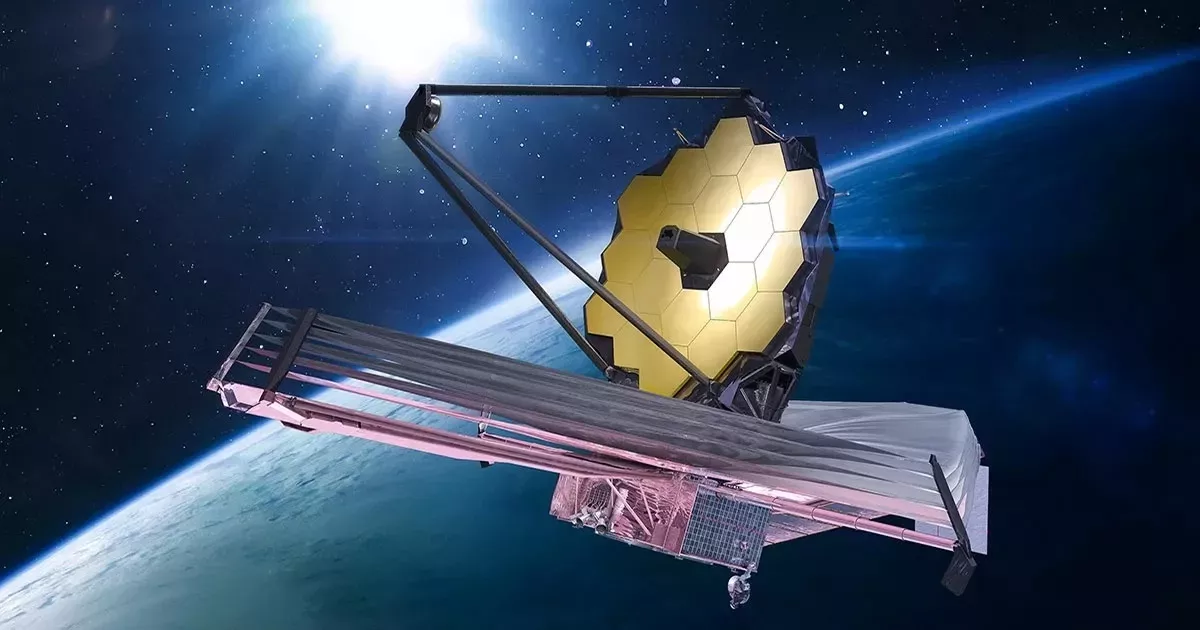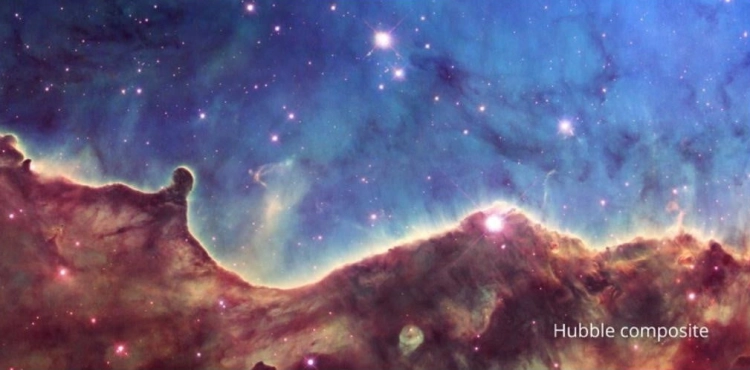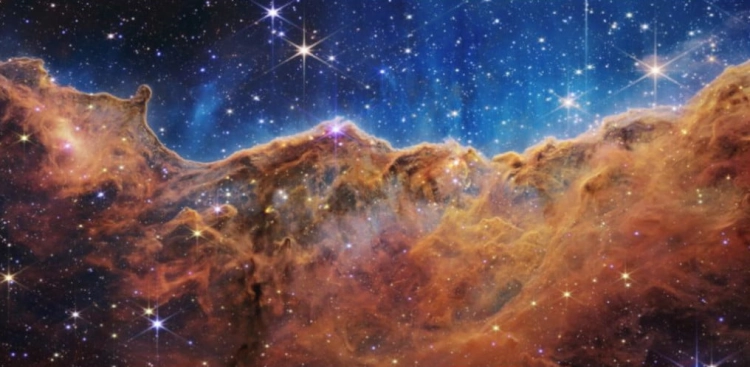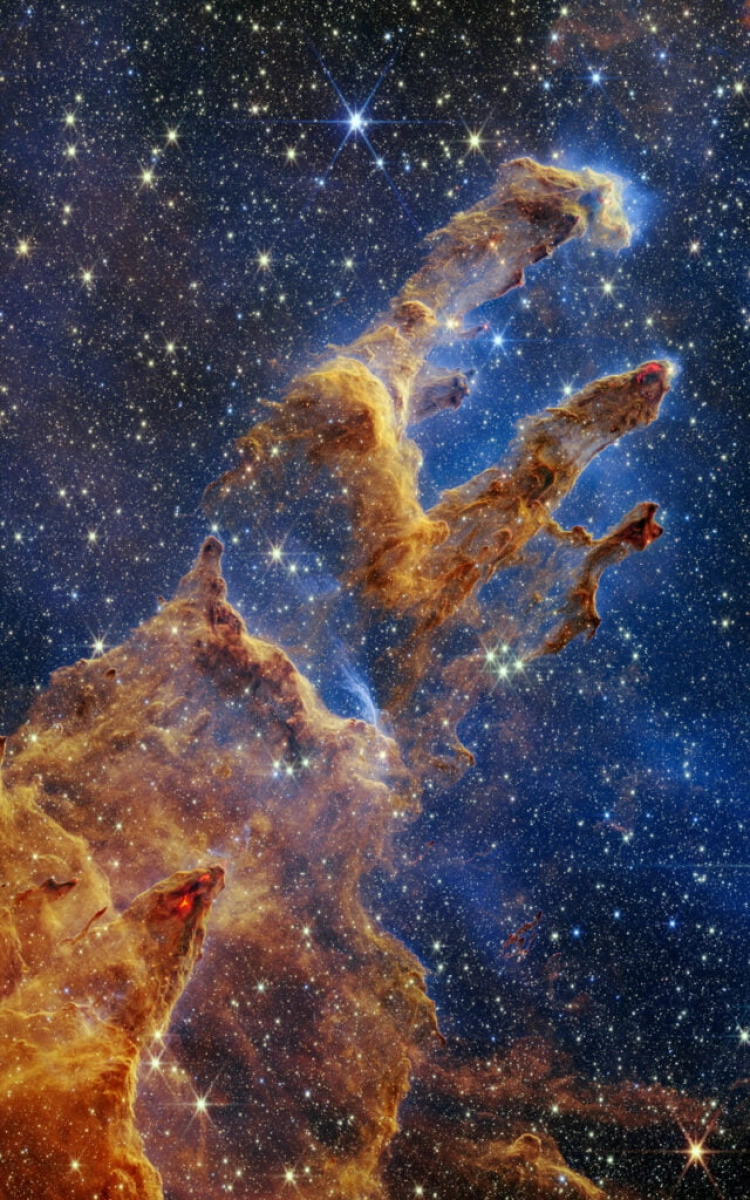

Since its launch, the James Webb Space Telescope (JWST) has dazzled us with its breathtaking views of the universe. From detailed images of our neighboring planets to glimpses into the farthest reaches of space, the JWST is redefining our understanding of the cosmos. In a recent series of observations, the spotlight was on Jupiter and Neptune, showcasing stunning visuals that bring these gas giants into sharper focus.
Have you seen the latest image of Jupiter taken by the JWST? The level of detail is nothing short of extraordinary, revealing everything from the intricate patterns of clouds in its outer atmosphere to the glowing auroras dancing at its poles. This new view showcases the giant planet like never before, bringing out the vivid hues and textures of its swirling gas bands.
The precision of JWST’s infrared imaging allows us to see Jupiter’s atmosphere in stunning clarity, capturing phenomena that were previously hidden. The auroras, for example, are seen in remarkable detail, appearing as shimmering halos around the poles, where Jupiter’s magnetic field interacts with charged particles.
And then there's Neptune. Often overshadowed by Saturn, Neptune also boasts an impressive ring system. The recent images capture Neptune alongside seven of its 14 moons, with the luminous Triton shining brightly above. Although the images of Neptune aren’t as sharp as those of Jupiter due to its staggering distance of about 2.7 billion miles, they highlight the vastness and mystery of our solar system.
The JWST is poised to revolutionize our understanding of exoplanets as well. With its advanced capabilities, the telescope can study the atmospheres of these distant worlds, searching for chemical signatures that might indicate the presence of life. To date, over 5,000 exoplanets have been identified, and the JWST promises to add many more to the list, providing us with new insights into the complexities of the universe.
The Carina Nebula is one of the most stunning celestial objects, and it's even more breathtaking through the lens of the James Webb Space Telescope (JWST). In its recent observations, the JWST captured an unprecedented view of the nebula, revealing details never seen before.

When viewed through the Hubble Space Telescope, the Carina Nebula is a rich tapestry of glowing gas and scattered stars. Hubble’s visible light capabilities bring out the vibrant hues of ionized hydrogen gas and the dark silhouettes of dense dust clouds. These features make the nebula appear as a beautiful, yet somewhat opaque structure, with many inner regions obscured from view.
Now, compare this to the same region of the Carina Nebula captured by JWST. With its ability to observe in the infrared spectrum, the JWST pierces through the dense clouds of gas and dust that block Hubble’s view. This capability unveils a hidden world of stars, stellar nurseries, and intricate structures that were previously invisible. In the JWST’s image, you can see newborn stars as bright points of light and faint, wispy tendrils of gas stretching across the scene.

The difference is astonishing. While Hubble shows the outer glow and surface details, JWST uncovers a massive population of stars forming within the nebula, along with complex filaments and hidden structures. This new perspective deepens our understanding of star formation, offering clues about the turbulent interactions that shape these vast stellar nurseries.
These observations are more than just visually stunning—they carry immense scientific value. The stars revealed in JWST’s image provide vital information on their age, composition, and formation processes, allowing astronomers to study the very early stages of stellar evolution. Such data is critical in piecing together how stars are born and evolve over time, adding yet another layer of complexity to our understanding of the cosmos.
The ability to see through the dust with infrared light also allows the JWST to probe deeper into the heart of the nebula, shedding light on previously hidden regions where new stars are forming. This reveals a more intricate web of interactions between stellar winds, magnetic fields, and gravitational forces—factors that drive the birth of stars and their eventual dispersal into the universe.
In short, the comparison between Hubble and JWST’s images of the Carina Nebula demonstrates the power of the new technology and the promise of deeper cosmic insights. As scientists continue to analyze these observations, we all gain a more complete picture of the processes that govern our universe’s evolution, bringing us one step closer to answering some of the most profound questions in astronomy.
The iconic Pillars of Creation, located within the Eagle Nebula, have long been a favorite target for telescopes, showcasing a dynamic region where new stars are born. While Hubble’s 1995 image of the pillars first brought them into the public eye, the James Webb Space Telescope’s (JWST) view takes our understanding to an entirely new level.
The JWST’s image, captured in stunning detail, peels back the veils of dust and gas, revealing countless stars forming within the towering columns. Each glowing tendril, now more pronounced, appears as a silhouette against the deep field of stars, their intricate structures hinting at the complex interplay of forces at work. With its infrared capabilities, JWST unveils the inner workings of these star-forming regions, highlighting the pockets where stars are actively emerging from collapsing clouds of gas and dust.

The sharpness of this view is unprecedented, showing not just the outer contours but the very heart of the pillars. Bright red spots scattered throughout the image indicate newly formed stars—each one just a few hundred thousand years old—further emphasizing the pillars as a stellar nursery.
This new perspective on the Pillars of Creation not only enhances our visual appreciation but also deepens our understanding of the processes driving star formation. The JWST’s ability to penetrate through the dense material, coupled with its advanced instruments, provides scientists with a clearer picture of how these celestial giants have evolved over millions of years. It’s as if we’ve been given X-ray vision to see the skeletons of the stars themselves, unveiling the secrets hidden within one of the most famous landmarks of our galaxy.
With this fresh view, the JWST’s image of the Pillars of Creation becomes more than a beautiful photograph—it’s a scientific window into the formation and evolution of stars, offering a glimpse of the universe’s intricate and ongoing process of creation.
One of the JWST’s inaugural triumphs was its deep field image, a revelation that left us all awestruck. The brilliant stars adorned with spikes are members of our own Milky Way, but beyond them, every other speck of light belongs to distant galaxies. What’s truly astonishing is the journey of light from these galaxies, taking over 13 billion years to reach us. This means we’re witnessing them as they existed near the very beginning of the universe.
The scale of these structures is so colossal that they warp the space around them, bending the light of galaxies situated behind them—a phenomenon known as gravitational lensing. This image has sparked discussions and theories, challenging our understanding of the universe's early history and the formation of galaxies.
The JWST has brought into focus not just stars and planets but entire galaxies, offering a new perspective on the cosmos. Early observations suggest that galaxies were larger and more numerous in the early universe than previously thought. This unexpected abundance of galaxies compels astronomers to revisit and refine the Big Bang model. However, far from undermining the theory, these discoveries affirm its robustness while highlighting the complexities that remain to be explored.
The development of the JWST is a story of perseverance, innovation, and a relentless pursuit of discovery. Initiated in 1996, the project aimed to succeed the Hubble Space Telescope with a more advanced observatory capable of peering deeper into the universe and back in time. Originally slated for a 2007 launch, the JWST's complexity and cutting-edge technology necessitated a complete redesign in 2005, delaying its completion to 2016. After extensive testing to ensure its readiness, the telescope was finally launched on Christmas Day 2021.
The JWST’s primary function is to capture images in the infrared spectrum, which is crucial for observing the most distant and ancient objects in the universe. By peering into this wavelength, the JWST can penetrate dust clouds that obscure other wavelengths, revealing objects too cold to emit visible light, such as forming stars and planets or galaxies at the dawn of time.
To avoid interference from the heat emitted by the Sun and Earth, the JWST must operate at extremely cold temperatures. NASA engineers devised innovative solutions, such as placing the telescope at the Earth's L2 Lagrange point—a location that allows the JWST to maintain a stable orbit while minimizing fuel consumption. The telescope's massive sunshield, comparable in size to a tennis court, blocks solar radiation, keeping its components at near absolute zero, ensuring the detectors can measure the faintest heat signatures from distant celestial bodies.
The JWST represents a significant leap forward in our capability to explore the universe. With its advanced instruments and strategic design, it promises to expand our understanding of cosmic phenomena—from the formation of stars and planets to the dynamics of galaxies across cosmic time. The data it provides will help answer fundamental questions about the universe's structure and history, heralding a new era of astronomy.
The James Webb Space Telescope (JWST) has a promising roadmap ahead, with several ambitious projects on its agenda:
1. Detailed Studies of Exoplanet Atmospheres
JWST will continue its exploration of exoplanets, focusing on analyzing their atmospheres for signs of habitability or biosignatures. It will study the atmospheric composition of super-Earths, mini-Neptunes, and potentially Earth-like planets in the habitable zones of their stars, looking for water vapor, methane, carbon dioxide, and other gases that could indicate the presence of life.
2. Exploring the Early Universe
One of JWST’s key goals is to peer back in time to the universe’s earliest stages, examining the first galaxies and stars that formed after the Big Bang. It will capture light from these ancient objects to help understand the formation and evolution of galaxies over cosmic time.
3. Mapping Star Formation Regions
JWST will observe star-forming regions in unprecedented detail, such as the Pillars of Creation and other nebulae. This will shed light on the processes that drive the birth and evolution of stars, revealing how dense clouds of gas and dust collapse to create stellar nurseries.
4. Investigating Supermassive Black Holes
Webb will focus on the centers of galaxies to study supermassive black holes and their role in galaxy formation and evolution. It aims to uncover the relationship between these colossal objects and their host galaxies, and how they influence each other over time.
5. Observing Our Solar System’s Outer Regions
Closer to home, JWST will observe distant objects like the icy bodies in the Kuiper Belt and the atmospheres of the outer planets. This could lead to a better understanding of the formation of our solar system and the characteristics of these remote worlds.
6. Revealing the Chemistry of Star-Forming Regions
JWST’s spectroscopic capabilities will allow scientists to study the chemical makeup of star-forming regions, protoplanetary disks, and even interstellar clouds. This will help identify the building blocks of planets and life, offering clues to how organic molecules and water are distributed across the cosmos.
7. Probing Dark Matter and Dark Energy
Future observations may delve into the mysteries of dark matter and dark energy, using the JWST’s sensitivity to measure how these unseen forces shape the universe’s structure and expansion.
With these projects, JWST is set to unlock deeper insights into the universe’s origins, evolution, and the potential for life beyond Earth. The coming years will be transformative for space science, as the telescope continues to push the boundaries of discovery.
To see the latest images and track the telescope’s status, visit the “Where is Webb” website.